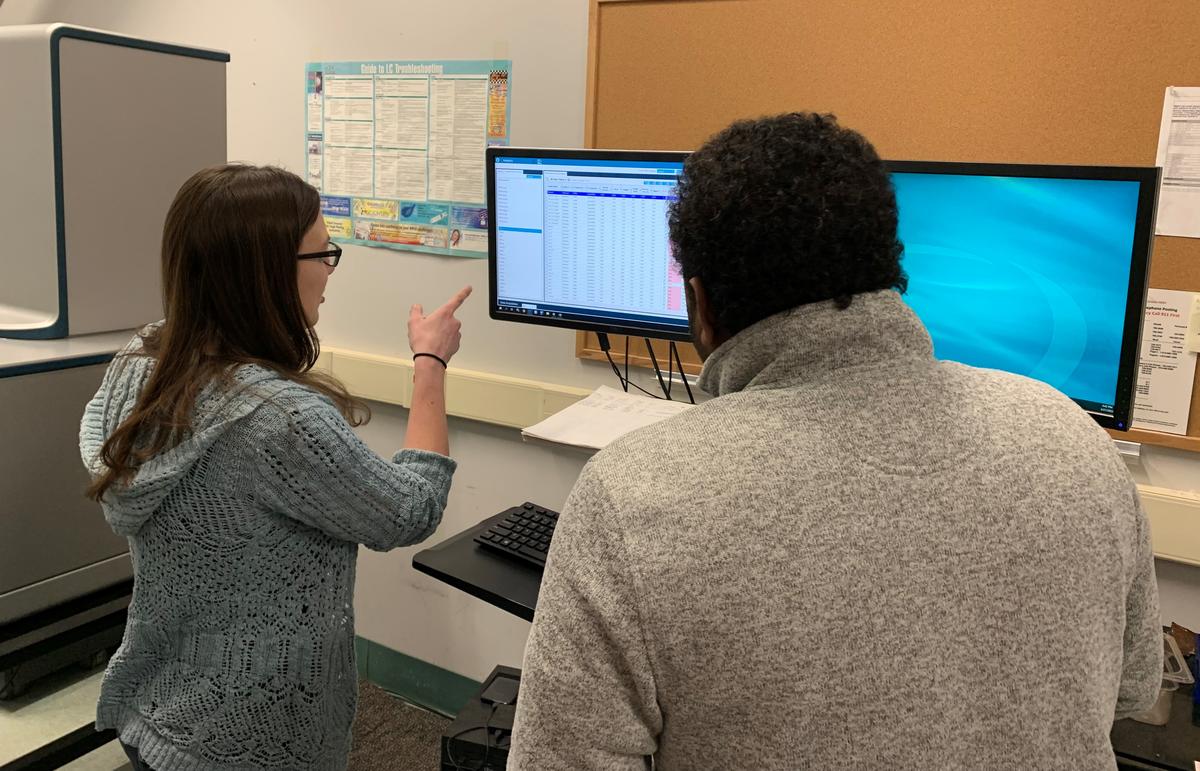“Investing in research is investing in options for our collective future,” said NRRI Executive Director Rolf Weberg. “And can you think of anything better to invest in?”
The University of Minnesota is asking the state legislature for $274 million for a new teaching lab on the Twin Cities campus and upgrades to aging structures – including $10 million for NRRI to expand laboratory facilities in Duluth and to construct a new metallurgical research building at the Coleraine, Minn., campus.
One visit to either facility makes it very clear why these funds are critical if the Institute is to continue to deliver on its mission for Minnesota and beyond.
Recent expanded research activity has led to shoehorning expensive and specialized analytical equipment into storage areas because of limited lab space in the Duluth facility, which was designed in the 1980s.
“We are crowded with equipment and researchers,” said Weberg. “This limits what we can do just at the time that we are being asked to do more.”
The Coleraine facility is even more dated, with buildings that were built in the 1930s and even earlier, for very different purposes than the research taking place today.
“As much as we appreciate the historical nature, we really can’t welcome industry collaborators or install state-of-the-art equipment into a building that accumulates indoor snowdrifts during the winter,” Weberg added.
Complex Challenges
NRRI’s approach to integrated research is focusing on complex global challenges. This, in turn, is attracting collaborators and partnerships around the region and the world. Today’s research arena requires productive teams and partnerships while demonstrating and delivering potential solutions with the ability to pivot as new information is gathered. NRRI employs a nimble, multi-disciplinary approach to meet this demand.
“There is no magic bullet for challenges like natural resource management or climate change,” said Weberg. “Everything is interconnected. There is no ‘easy’ button. Just sustained, hard work and the appropriate facilities and people to do it.”
A good example of this integrated approach is NRRI’s Iron and Minerals of the Future Initiative. It is designed to define opportunities for Minnesota’s iron ore industry as it adapts to changing ore resources and help the industry develop a portfolio of higher value iron products.
“Mining operations impact land use decisions, habitat, wetlands, forests and water resources,” Weberg said. “That’s why, for every mineral-related project we engage in, our minerals team engages NRRI ecosystem, forestry and materials researchers in addition to external collaborators. They all have a critical piece of the solution.”
Make Room for Innovation
Plans for the NRRI Duluth facility center around transforming a fourth-floor open space currently filled with office cubicles into a state-of-the-art flexible laboratory space that can easily adapt to changing projects. It will increase research capacity and turn-around time, provide more opportunities for students and faculty to participate in applied research, and more effectively engage collaborators and partners.
Plans for NRRI’s Coleraine site focus on the design and construction of a new process technology building for metallurgy research. State and federal research investments and industry support are helping NRRI researchers onboard new technologies and equipment. This building will house new metallurgy research equipment and will allow redistribution of other assets across the site for improved safety, material flow and engagement of research partners.
NRRI’s sustained role in applied, integrated research is especially valued by industry and agency stakeholders to help prepare for the “economy of the future.”
“Minnesota is fortunate to have had legislators and other leaders with the foresight to create NRRI and support its mission,” Weberg added. “Today, we need to be good stewards of that investment and work together to deliver innovation impacts to Minnesota, our region and the nation.”
